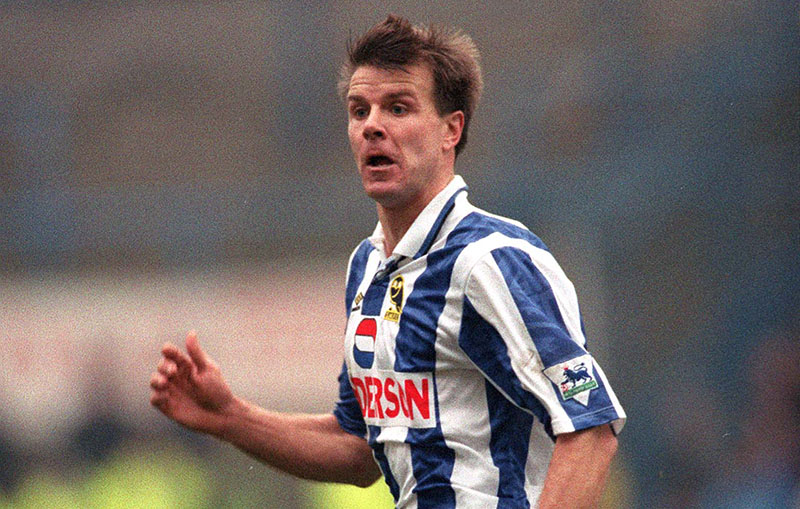
A tireless but classy operator, the right-back is still fondly remembered at Hillsborough as part of the side that reached an unlikely three cup finals in as many years
6 February ~ The week of May 15, 1993 was a busy one for Roland Nilsson. Having played 120 minutes for Sheffield Wednesday in their FA Cup final stalemate against Arsenal, the right-back flew to Stockholm, where on May 19 he played the full 90 minutes for Sweden in their 1-0 World Cup qualifying win over Austria. A day later he was back at Wembley for the Cup final replay.
With the score again locked at 1-1, Nilsson was substituted after 118 minutes. Sixty seconds later Andy Linighan rose to meet an Arsenal corner, Chris Woods spilled the resulting header and a hectic season for Wednesday, including two cup finals and a first European campaign in three decades, ended with nothing to show for it.
At the age of 26 Nilsson was already a three-time Allsvenskan champion and a UEFA Cup winner with IFK Gothenburg as well as an international, playing against future team-mate Chris Waddle in a 0-0 draw in Stockholm three months before Ron Atkinson brought him to Hillsborough in December 1989. His floppy blond hair quickly became a familiar sight to Wednesday fans. However, a disastrous 3-0 defeat at home to Nottingham Forest on the final day of Nilsson’s first season ended in a shock relegation on goal difference.
The classy defender offered stability down the right as they earned promotion at the first attempt, while also winning the League Cup – still the last team to win a major trophy from outside the top division. That final was one of Nilsson’s most memorable displays, snuffing out the threat of Manchester United’s young left-wing sensation Lee Sharpe.
Yet that 1-0 win was no fluke, as Nilsson and Wednesday proved the next season. Back in the top flight, they surged to third in the table – their best finish since 1961. While Atkinson moved on, new player-manager Trevor Francis prepared his team for Europe by giving Nilsson a new partner down the right wing: Chris Waddle. The two proved a perfect combination, Nilsson’s tireless work and discipline allowing Waddle to concentrate on terrorising opposition defences. “People forget how good he was,” Waddle once said of his former team-mate. “Very disciplined, rarely caught out of position, rarely made mistakes.” That combination helped Wednesday to both cup finals, including victory over Sheffield United in the FA Cup semi-final, in 1993.
By the time the next year’s World Cup came round, Nilsson had left Hillsborough. In January 1994 he complained of homesickness to Francis, who persuaded him to stay until the summer when he won a World Cup bronze medal before playing for Helsingborgs. A return to England followed three years later at the behest of Atkinson, but it was to Coventry. Nilsson’s two years at Highfield Road were mainly spent battling relegation. He returned again in 2001 as player-manager after they had succumbed to the drop, but could not lift City out of Division One and lasted less than a year.
Back in Sweden he has since forged a good coaching career, and has not been forgotten in South Yorkshire. In 2017 Nilsson was one of 15 players – and the only one from outside the UK or Ireland – painted into the “Sheffield Wednesday Dream Scene”, which was commissioned to celebrate the club’s 150th birthday. To this day the name of Roland Nilsson is never far from Wednesday fans’ lips, be it in discussions about the club’s greatest ever foreign player, a nostalgic rendition of his song on an away day or the outside chance of him becoming manager following yet another sacking at Hillsborough.
Main photo by Colorsport: Roland Nilsson playing for Sheffield Wednesday in 1992
This article first appeared in WSC 383, February 2019. Subscribers get free access to the complete WSC digital archive – you can find out more here